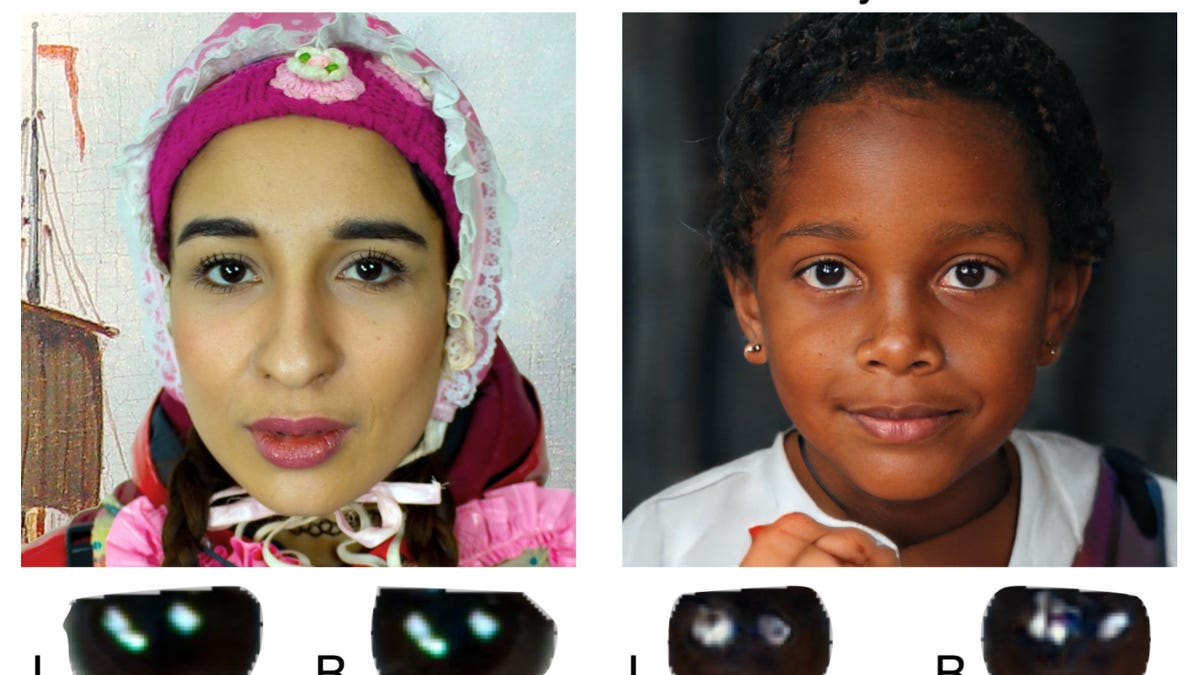Deepfakes can be detected by analyzing light reflections in eyes, scientists say
Synthesized faces created for fake social media accounts can be spotted by looking at the eyes.

The eyes in the real photo on the left show the same reflection, but not the eyes in the fake image on the right.
Scientists at the University of Buffalo have published a paper outlining a way to detect deepfake images: by looking at the reflection in the eyes to see if it's consistent. It works for generative adversary network (GAN) models that are being used to synthesize realistic human faces. The way to tell if they're real is all in the eyes, researchers say.
GAN-synthesized faces are being used to create fake social media profiles to deceive users, explains the paper, published late last year and reported Thursday by The Next Web.
"GAN-synthesized faces can be exposed with the inconsistent corneal specular highlights between two eyes," the scientists said. By comparison, photos taken of real faces will have the same reflection in both eyes.

